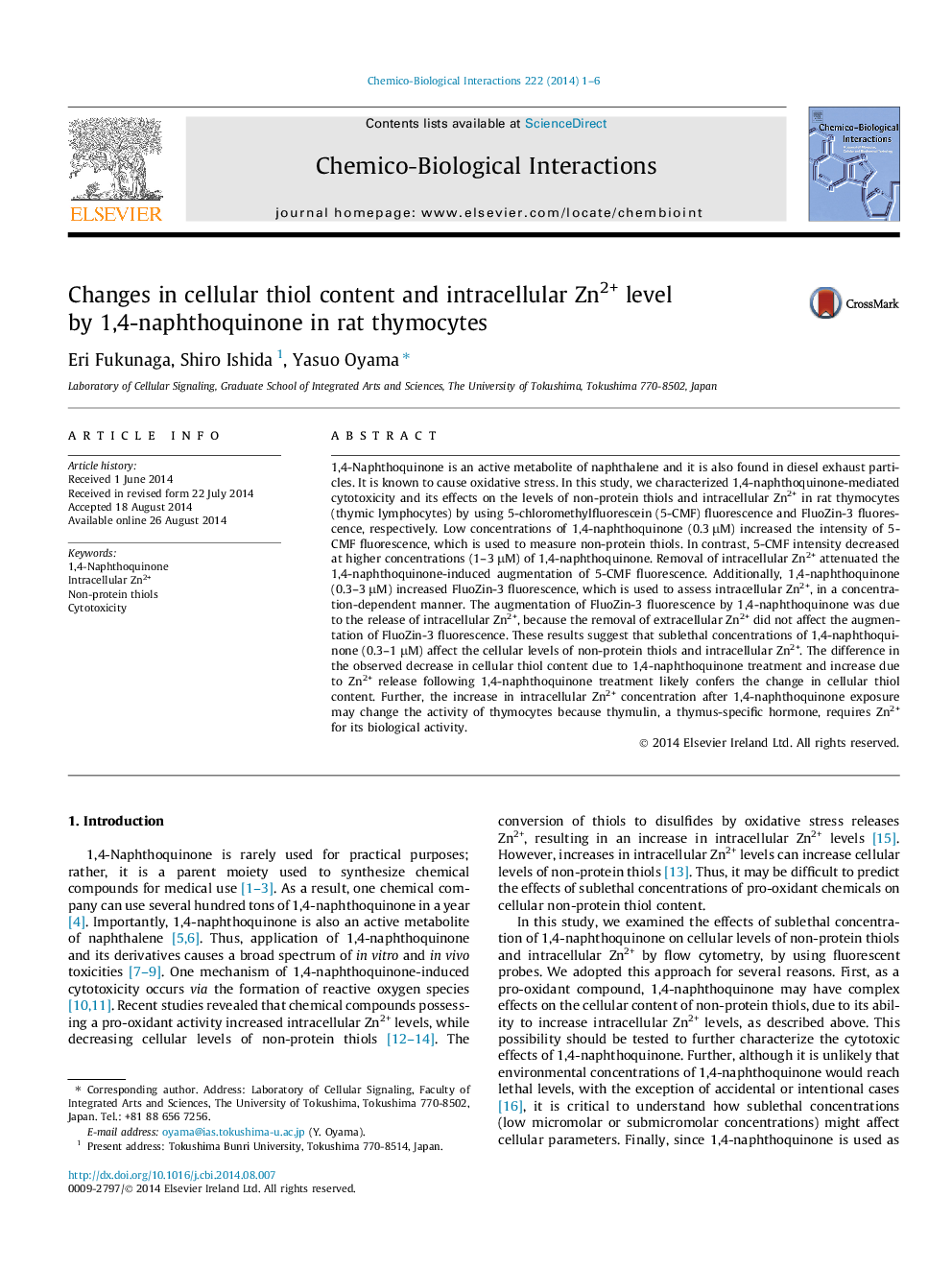| کد مقاله | کد نشریه | سال انتشار | مقاله انگلیسی | نسخه تمام متن |
|---|---|---|---|---|
| 2580346 | 1561619 | 2014 | 6 صفحه PDF | دانلود رایگان |

• 1,4-Naphthoquinone (NQ), an environmental pollutant, induces oxidative stress.
• Low doses of NQ (0.3 μM) increased cellular thiol content in rat thymocytes.
• A decrease in thiols was observed at high concentrations (1–3 μM) of NQ.
• The increase in thiol content was dependent on intracellular Zn2+ released by NQ.
• NQ may change a cell susceptibility to oxidative stress.
1,4-Naphthoquinone is an active metabolite of naphthalene and it is also found in diesel exhaust particles. It is known to cause oxidative stress. In this study, we characterized 1,4-naphthoquinone-mediated cytotoxicity and its effects on the levels of non-protein thiols and intracellular Zn2+ in rat thymocytes (thymic lymphocytes) by using 5-chloromethylfluorescein (5-CMF) fluorescence and FluoZin-3 fluorescence, respectively. Low concentrations of 1,4-naphthoquinone (0.3 μM) increased the intensity of 5-CMF fluorescence, which is used to measure non-protein thiols. In contrast, 5-CMF intensity decreased at higher concentrations (1–3 μM) of 1,4-naphthoquinone. Removal of intracellular Zn2+ attenuated the 1,4-naphthoquinone-induced augmentation of 5-CMF fluorescence. Additionally, 1,4-naphthoquinone (0.3–3 μM) increased FluoZin-3 fluorescence, which is used to assess intracellular Zn2+, in a concentration-dependent manner. The augmentation of FluoZin-3 fluorescence by 1,4-naphthoquinone was due to the release of intracellular Zn2+, because the removal of extracellular Zn2+ did not affect the augmentation of FluoZin-3 fluorescence. These results suggest that sublethal concentrations of 1,4-naphthoquinone (0.3–1 μM) affect the cellular levels of non-protein thiols and intracellular Zn2+. The difference in the observed decrease in cellular thiol content due to 1,4-naphthoquinone treatment and increase due to Zn2+ release following 1,4-naphthoquinone treatment likely confers the change in cellular thiol content. Further, the increase in intracellular Zn2+ concentration after 1,4-naphthoquinone exposure may change the activity of thymocytes because thymulin, a thymus-specific hormone, requires Zn2+ for its biological activity.
Figure optionsDownload as PowerPoint slide
Journal: Chemico-Biological Interactions - Volume 222, 5 October 2014, Pages 1–6